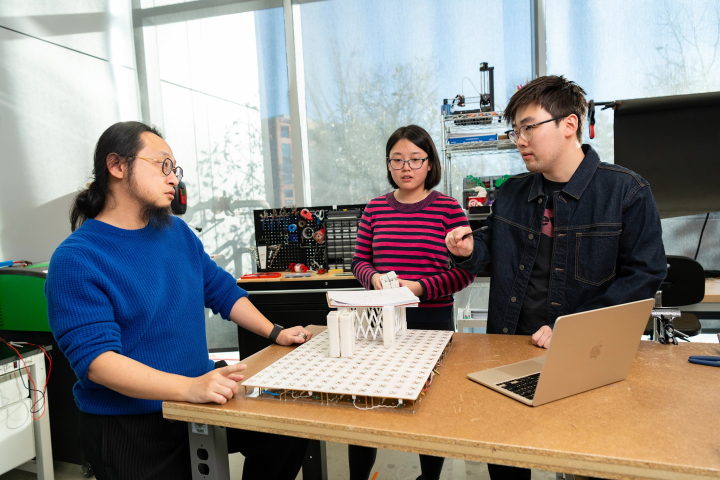Embodied AI Can Close the Nonverbal Communication Gap for Blind Individuals
Nonverbal communication in the workplace—like a nod, hand gesture, or glance—is crucial for building trust and collaboration among co-workers. But for blind individuals, these subtle cues often go unnoticed, creating barriers to effective teamwork.
Research underway at the University of Maryland and Cornell University could soon change that, with researchers from both institutions developing an embodied (wearable) AI system that can interpret and convey nonverbal signals in a way that strengthens communication and trust between blind and sighted individuals.
The project—supported by two seed grants from the Institute for Trustworthy AI in Law & Society (TRAILS) totaling almost $230,000 in indirect costs—is still in the prototype stage, but the researchers hope to take the technology from their lab space and begin testing it in professional workplace settings within the next 18 months.
“Sight-impaired people continue to play an active role in today’s workforce across sectors and occupations, yet little remains known regarding best practices that can improve their non-verbal interactions with their sighted colleagues,” says Ge Gao, an assistant professor in UMD’s College of Information who is a co-PI on the project.
Gao gives the example of a sighted individual discussing a task with a blind colleague, with the sighted person instinctively turning their head and gazing directly at their work partner, seeking acknowledgement of the idea they are talking about. Unaware of this silent interaction, the blind worker is unresponsive, which can ultimately lead to tension between the co-workers.
The AI-infused technology under development at UMD and Cornell will combine tactile (touch perceived), haptic (motion or vibration initiated) and audio feedback to convey non-verbal information in ways that feel natural and unobtrusive.
Click HERE to read the full article
The Department welcomes comments, suggestions and corrections. Send email to editor [-at-] cs [dot] umd [dot] edu.
